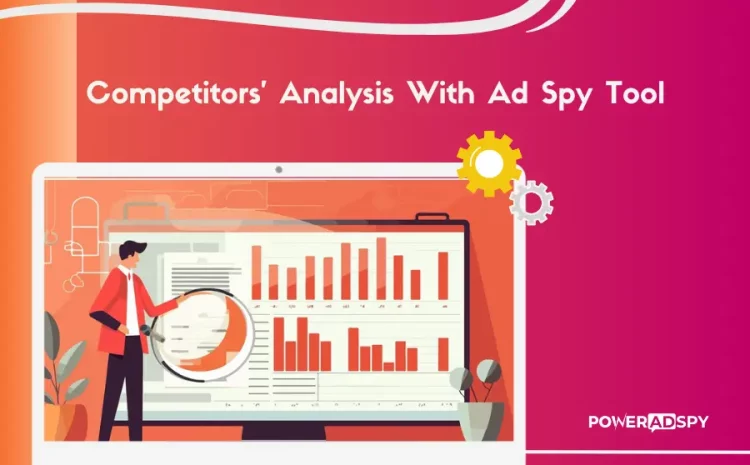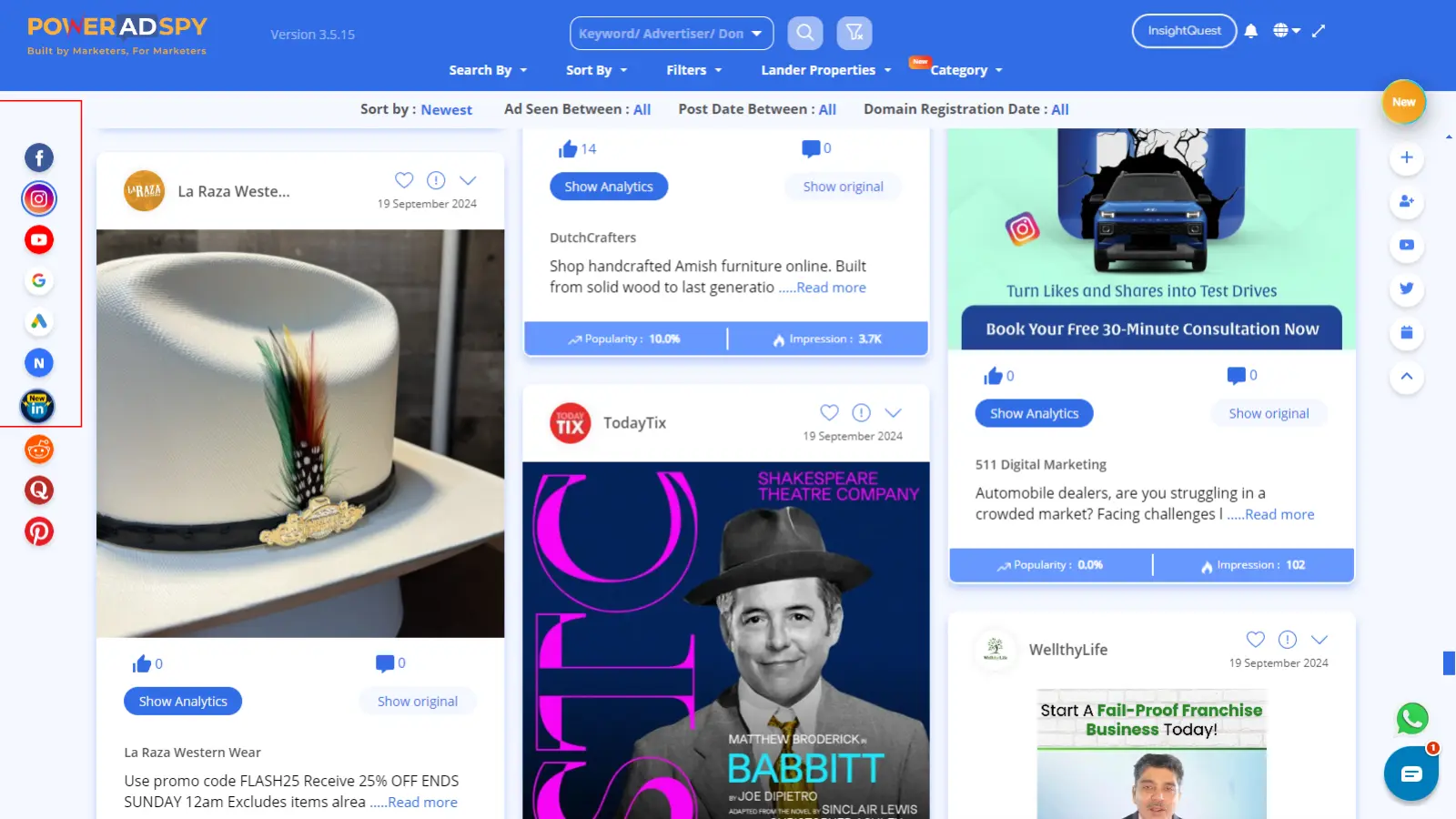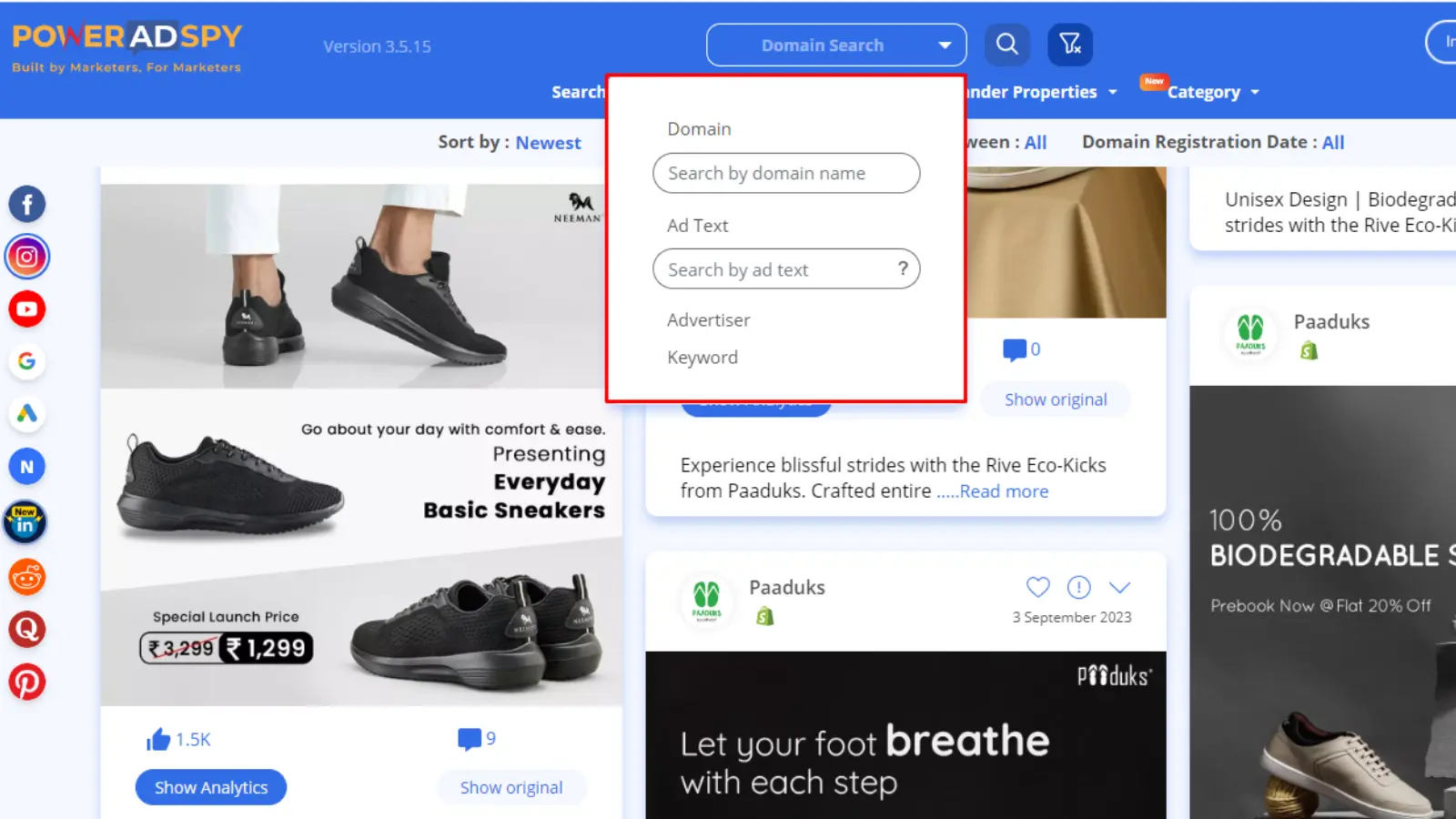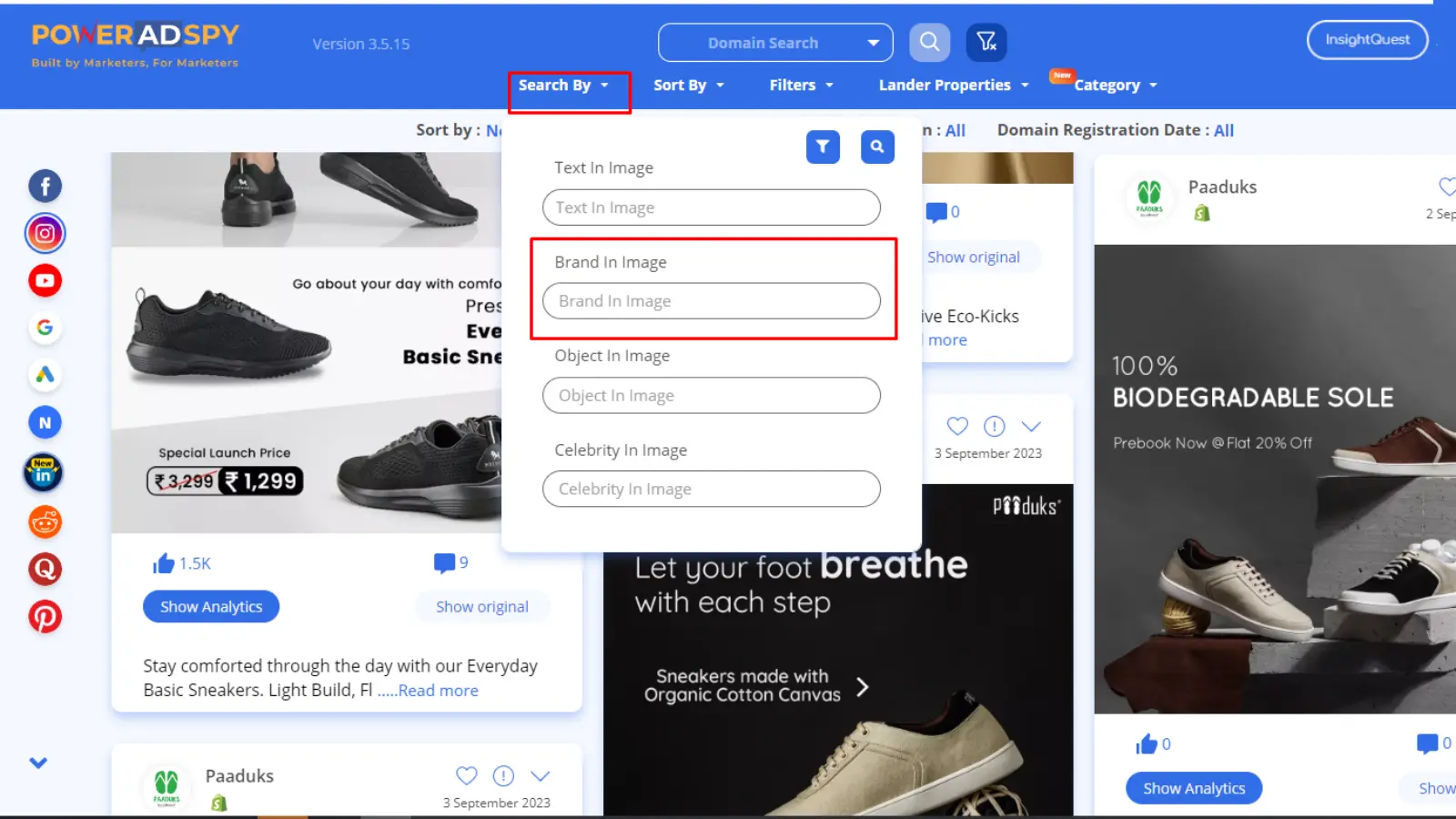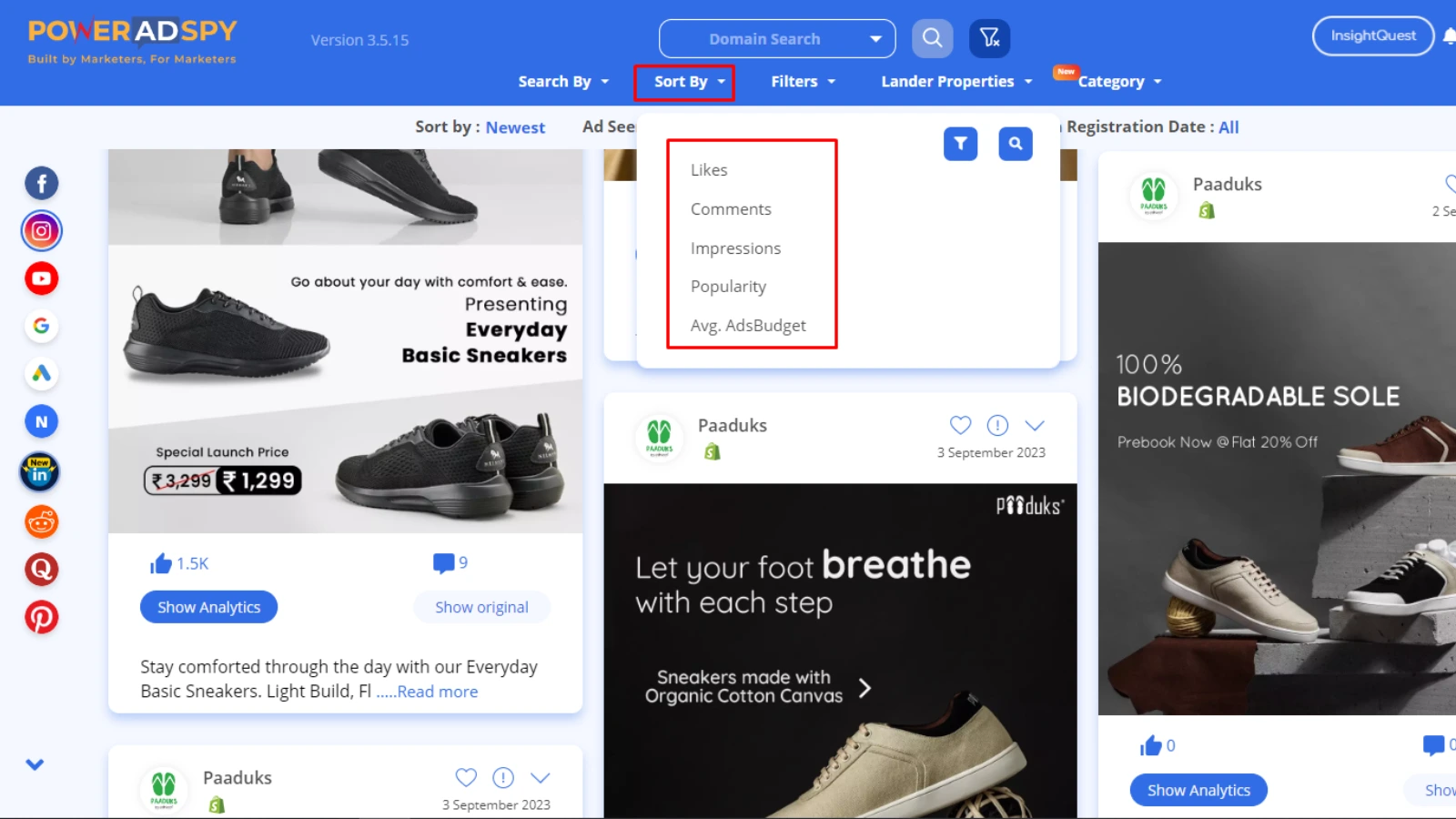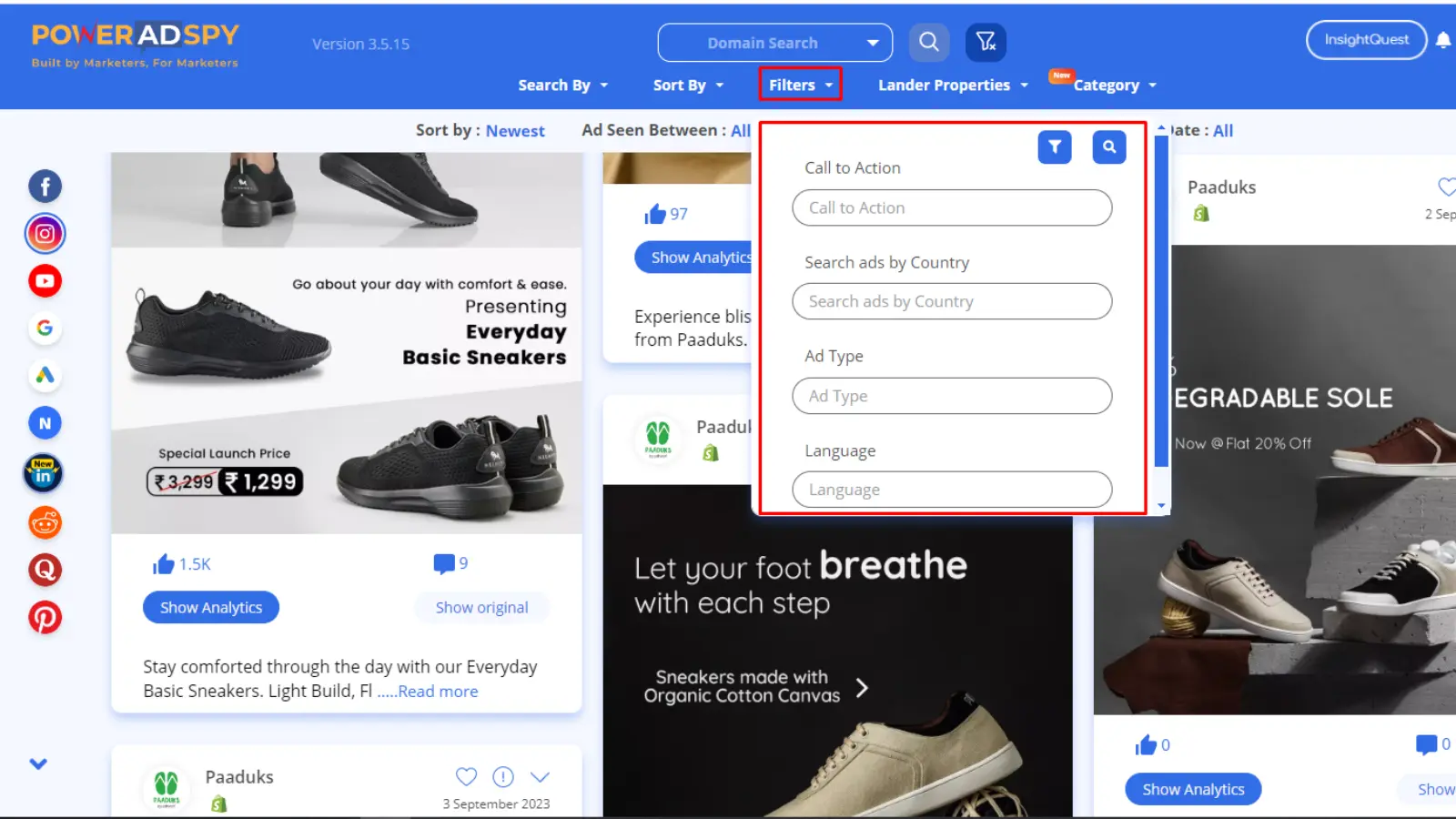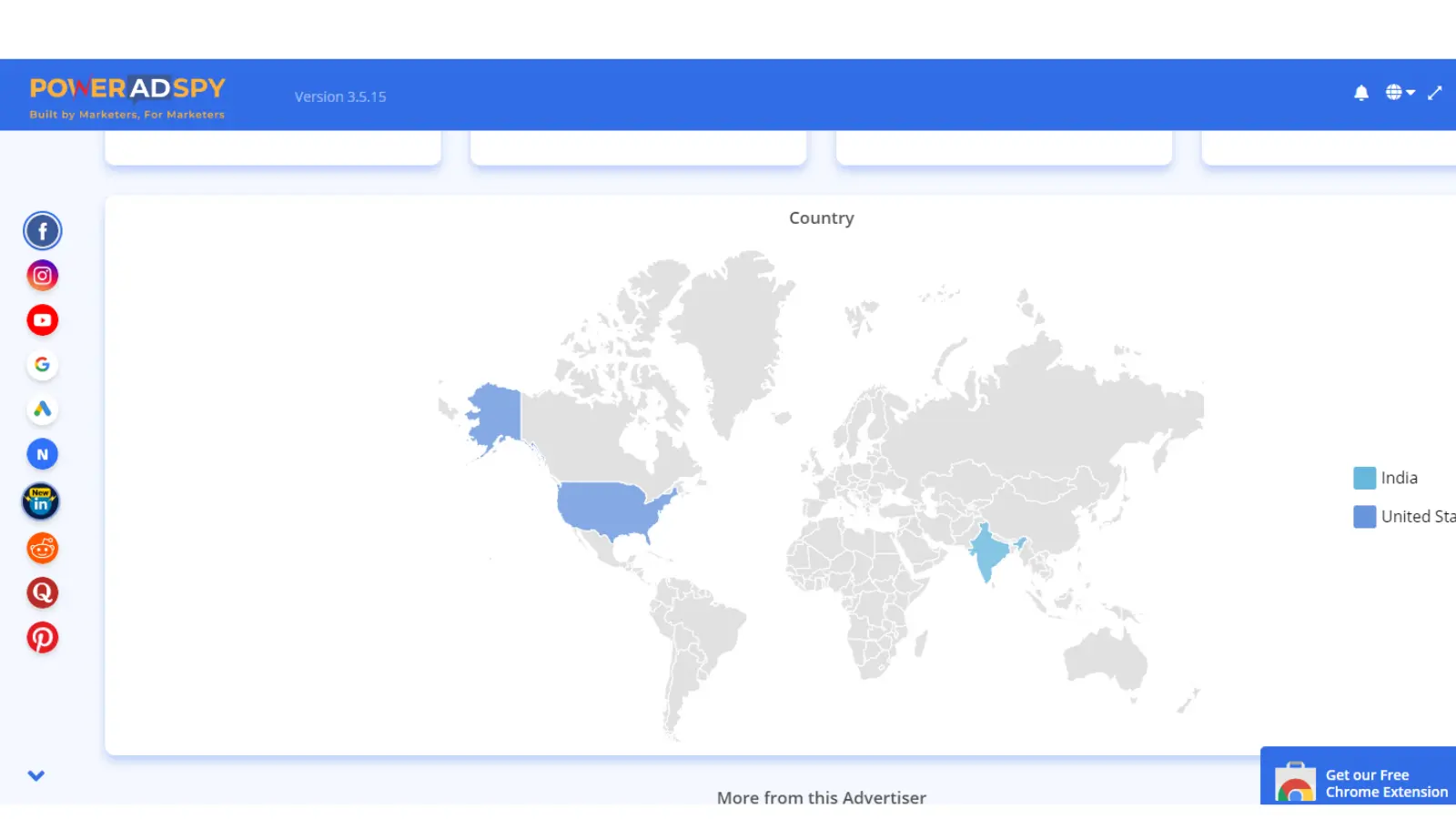How To Use An Ad Spy Tool To Track And Analyze Competitors’ Advertising Strategies?
Have you ever noticed an ad that makes you stop mid-scroll? It is not just luck—it is eye-grabbing design, clever messaging, or something else entirely. But what if you could decode why it works and apply those insights to your strategy? That is where ad spy tools come in.
In a world where staying competitive means knowing what others are doing, ad spy tools make it easier than ever to track, analyze, and learn from your competitors’ ad strategies.
If you are ready to elevate your advertising game and stay one step ahead of the competition, this guide will show you how to use an ad Spy tool to make that happen.
Listen To The Podcast Now!
Why Does Competitor Analysis Matters In Advertising?
Before we dive into the technicalities of ad spy tools, let us talk about why competitor analysis is a priority in advertising. In every industry, especially in the digital space, businesses are vying for attention. What separates successful companies is their ability to innovate while keeping a close eye on their competitors.
Competitor analysis offers several benefits in advertising:
- Identifying Successful Campaigns: By observing what works for your competitors, you can emulate and improve their success. Maybe they have cracked the code on customer engagement or found a platform that delivers high ROI.
- Avoiding Common Pitfalls: Learning from others’ mistakes is as important as learning from their successes. If a certain ad format or strategy fails for your competitors, you can adjust your approach to avoid the same issues.
- Spotting Market Trends Early: Tracking competitors allows you to spot emerging trends early, allowing you to capitalize on them before the market becomes saturated.
In the following section, we will introduce the concept of ad Spy tools and explore how they simplify competitor analysis.
Why Do You Need Ad Spy?
So, why exactly do you need an ad spy tool, and why is it becoming a go-to resource for marketers? Spying on ads can empower you to monitor and track ads across various platforms, acting like a powerful magnifying glass that reveals your competitors’ strategies and tactics.
With the insights gained from these tools, you can uncover what makes their campaigns successful and apply those lessons to your marketing efforts. This ability to analyze and adapt not only saves you time but also gives you a significant edge in a fast-paced environment.
Why is it Important?
- Efficiency: An ad spy tool saves you the headache of manually tracking ads, which would otherwise be an impossible task, especially for large-scale competitor monitoring.
- Data-Driven Decisions: With vast amounts of data, you can make informed decisions backed by real-time market insights.
- Edge Over Competitors: By seeing what is working (or not) for your competition, you can refine your strategies for maximum impact.
But how does it work? In the next section, we will break down the core features of an ad spy data tool.
Key Features Of An Ad Spy Tool
Ad spy tools come loaded with powerful features designed to streamline the process of competitor analysis. Let us look at key functions that make these tools indispensable for any marketer.
- Comprehensive Ad Search Filters
An AdSpy tool like PowerAdSpy allows you to filter ads based on platform, ad type, target audience, date range, and even specific keywords. For instance, if you are curious about how a particular product is advertised on Instagram, you can use filters to find ads matching your criteria.
How This Helps You: The ability to narrow your search means you can focus on the most relevant ads and extract actionable insights without wasting time on irrelevant information.
- Performance Metrics
Most AdSpy tools provide insights into key performance indicators (KPIs) such as engagement rates, impressions, and estimated ad budget. It enables you to see which ads are gaining traction and which are falling flat.
How This Helps You: By understanding the metrics that drive successful ads, you can replicate those elements in your campaigns to achieve similar or even better results.
- Competitor Analysis
A standout feature of an ad spy tool is its ability to compare your ads directly with competitors. You can track what ads they’re running, how long their campaigns have been active, and the type of content they’re using to engage their audience.
How This Helps You: By benchmarking your ads against your competitors, you can identify areas where you need to improve and discover untapped opportunities in your niche.
- Creative Inspiration
Ad spy tools also serve as a great source of creative inspiration. With access to thousands of ads, you can discover new ways to design your creatives, craft compelling copy, and implement effective calls-to-action (CTAs).
How This Helps You: Staying ahead of the creative curve is crucial in advertising. AdSpy tools ensure you are never short of fresh ideas, helping you consistently create ads that stand out.
Now that we have explored the key features, let us move on to the practical side of things: how you can start using tools like PowerAdSPy to track competitor ads.
Also Read
Why Spy On Ads and Best Tools to Do It
Analyse The Life Of Ad Spy Tools And How To Use Them To Succeed In Your Business
Importance Of Using An Ad Spy Tool
Tracking Competitor Ads With Precision
One of the primary advantages of PowerAdSpy is its ability to track your competitors’ ads in real time. Whether you are interested in learning about their ad placement, the platforms they use, or how they have structured their campaigns, such tools give you complete visibility.
Here is how you can effectively track competitor ads using PowerAdSpy:
- Select Platform
Start by logging into your PowerAdSpy dashboard. Your first task is to select the platforms where your competitors are most active. Different platforms, like Facebook, Google, Instagram, LinkedIn, Reddit, Quora, and YouTube, have unique dynamics and audience behaviors. Depending on where your industry sees the most activity, narrow your search accordingly to target the most relevant platforms.
- Use Advanced Search
After selecting a platform, take advantage of the advanced search feature. You can search ads by domain or the advertiser’s name, as well as by ad text or specific keywords. It will help you focus on competitor ads that match the exact criteria you are interested in.
- Search by Brand or Image
This feature allows you to dig deeper by searching for ads that contain specific brands in their images or texts. You can even search for advertisements that feature celebrities, which adds another layer of competitor analysis if influencer marketing is relevant to your industry.
- Sort by Engagement
The sort feature is your next stop. You can arrange ads with important engagement metrics such as likes, shares, impressions, and overall popularity. There is also an option to sort by ad budget, helping you identify how much your competitors budget in particular campaigns.
- Filter Ads
Fine-tune your search results by using the filter option. It can filter ads by country, language, CTA (call-to-action), and ad format. This level of granularity allows you to focus on ads most relevant to your target audience and industry.
- Explore Categories
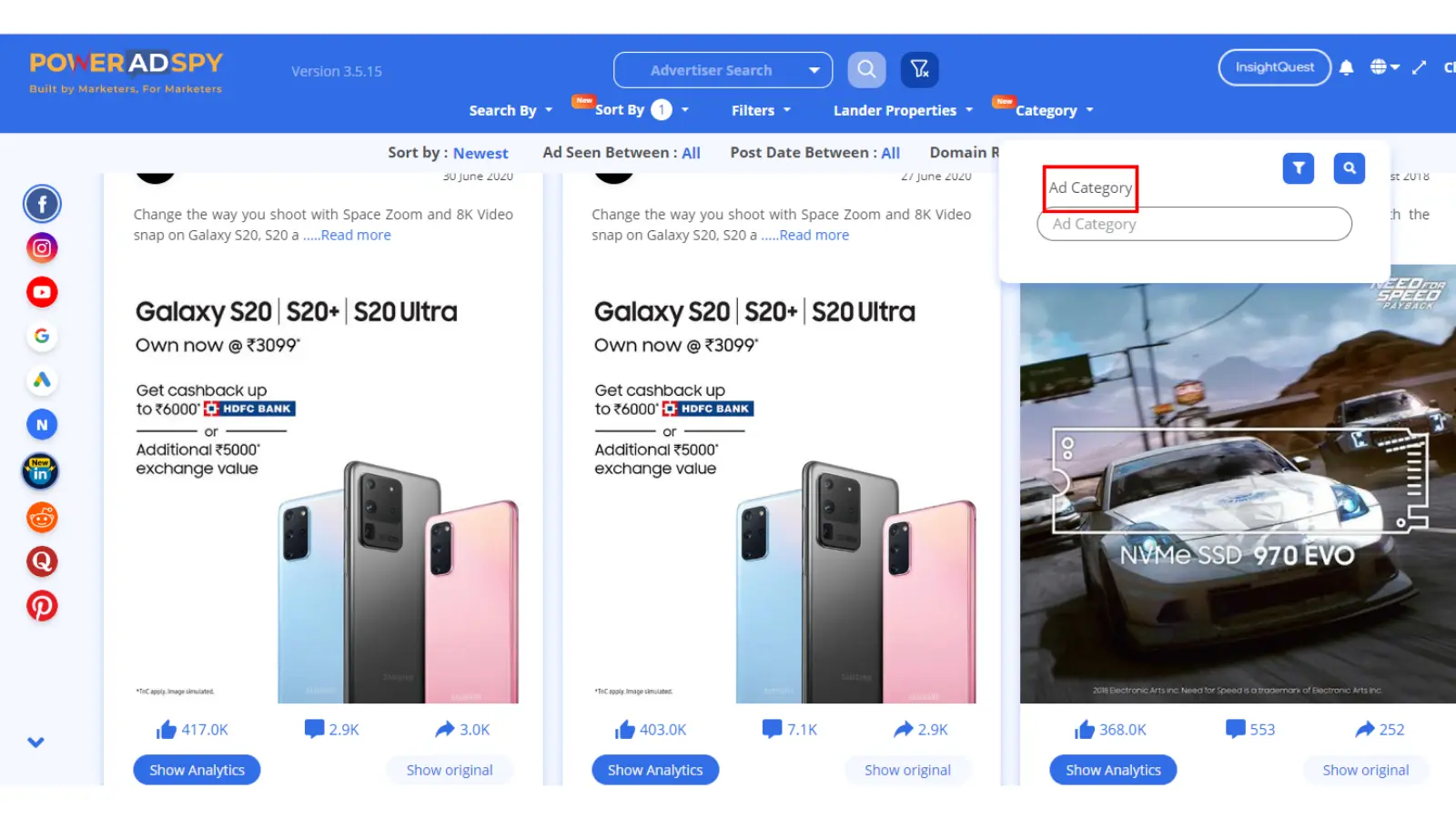 To specify your niche, the category feature helps you find ads that align with your niche, industry, or area of interest. You can ensure that you are comparing yourself to competitors in your specific market space.
To specify your niche, the category feature helps you find ads that align with your niche, industry, or area of interest. You can ensure that you are comparing yourself to competitors in your specific market space.
Tracking your competitor’s ads is a crucial step in gathering data. However, data on its own is not sufficient. Next, we will explore how to analyze these findings and transform them into actionable insights.
- Analyze Competitor Ads
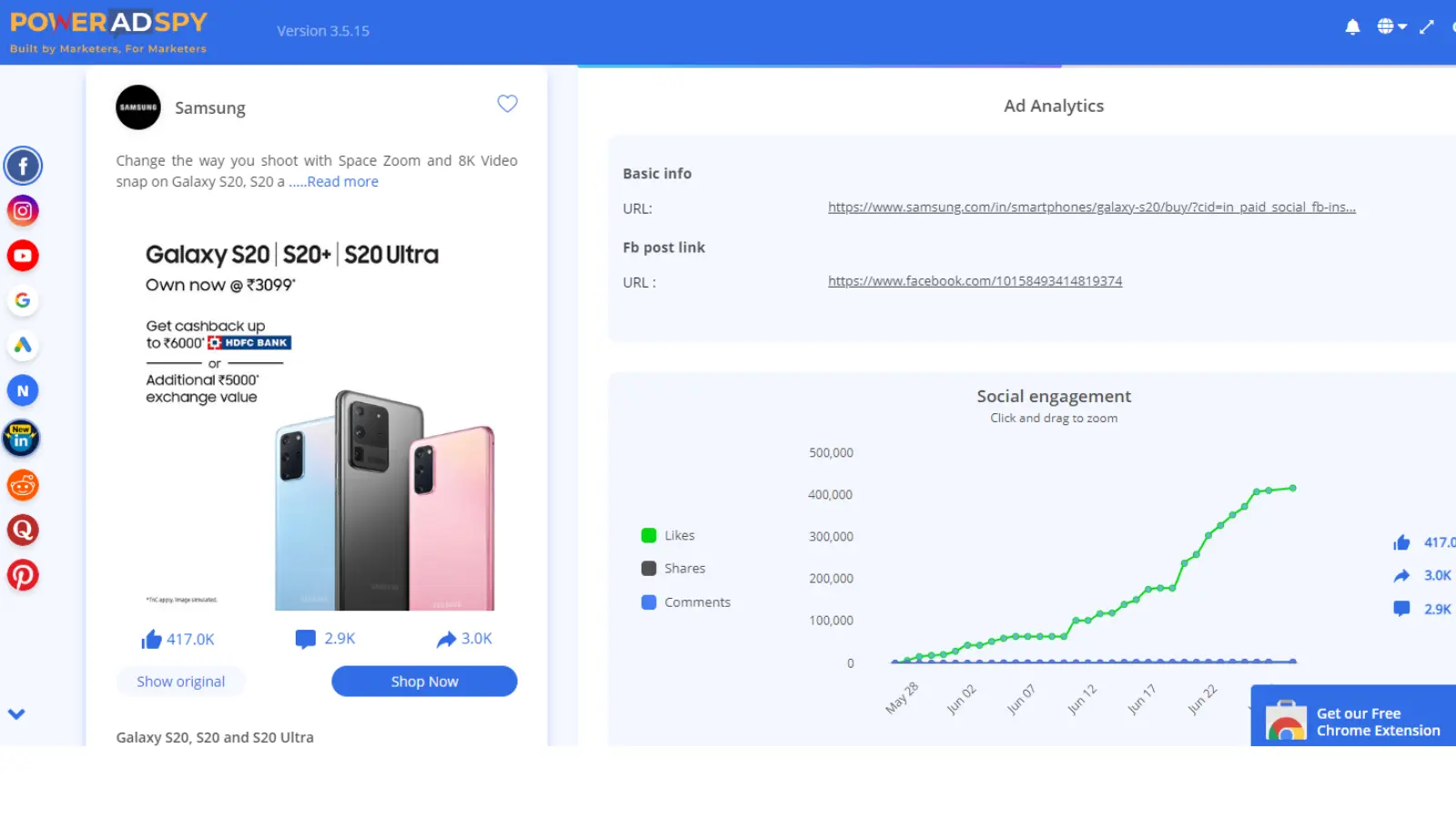 Once you have collected the ads, click on the analytics to uncover valuable engagement details.
Once you have collected the ads, click on the analytics to uncover valuable engagement details.
This feature provides insights into target audience demographics, age groups, and even specific regions targeted. With these insights, you can fine-tune your marketing strategies based on your competitor’s approach.
Following these steps, you can perform a thorough competitive analysis using PowerAdSpy, turning your competitor’s ad performance into a roadmap for your marketing success.
Analyzing Competitor Strategies
Now that you have tracked your competitors’ ads, what comes next? Analysis is key. This step enables you to move beyond merely observing ads and begin extracting insights that can drive your campaigns forward.
Here is what you should focus on during the analysis stage:
Creative Elements
Examine the visuals and ad copy your competitors are using. Are they using bold colors? What is the tone of their messaging? Are they employing humor or maintaining a professional tone? Understanding these creative choices will help determine what resonates with your shared audience.
Targeting Strategies
Who are your competitors targeting? You can fine-tune your audience segmentation by examining the demographics, psychographics, and behaviors they are targeting.
Engagement Levels
Look at the engagement metrics like likes, comments, and shares. If an ad obtains a significant interaction, it is a sign that it is hitting the mark with the audience.
Ad Format
Are your competitors using carousel ads, video ads, or static images? Some formats may perform better depending on the platform and audience. This insight helps you choose the most effective format for your next campaign.
Now, you know how to analyze ads of your competitors’ ad creatives, but do you know how to interpret them and discover their winning ad strategies? Let’s have a look.
Interpreting AdSpy Metrics
Once you have collected the data from a PowerAdSPy, the next challenge is interpreting the metrics. These informative numbers can be overwhelming if you are skeptical about using them to your advantage. Here is a quick guide to understanding some key metrics:
- Engagement Rate: This refers to how much interaction (likes, shares, comments) an ad receives to its reach. A high engagement rate suggests the ad is resonating with its audience.
- Impressions: Impressions show how many times an ad has been viewed. It is a key metric for understanding reach, but it is not the only one that matters. An advertisement with high impressions but low engagement may need tweaks to its creative or messaging.
- Conversion Rate: This is the percentage of people who clicked on your ad and completed the desired action (e.g., purchasing or signing up for a newsletter). High conversion rates indicate a well-targeted, persuasive ad.
Analyzing these metrics will allow you to optimize your campaigns, where you can replicate your competitors’ ad strategies. Based on that, you can also ensure to make your ads achieve the best possible results.
Applying Insights To Your Campaigns
Now that you have done your homework, it is time to apply these insights to your campaigns. Here is how:
Refine Your Targeting
Use what you have learned about your competitors’ audience segmentation to refine your targeting. You may find untapped demographics or interests that your competitors are ignoring.
Improve Ad Creatives
If certain creative elements perform well for your competitors, feel free to draw inspiration from them. However, always add your unique twist to ensure your brand stands out.
Optimize Budget Allocation
If you notice competitors spending heavily on some platforms or ad formats, it may be worth reallocating your budget to test these channels.
Test New Formats
Your competitors may be using different formats you haven’t explored yet, like video or carousel ads. Use this to experiment with new formats and see what delivers the best results.
Conclusion
Competitor analysis is not just about copying what works; it is about learning, adapting, and innovating based on the insights you gather. With an Ad intelligence tool, tracking and analyzing competitor ads becomes a streamlined process, offering valuable data that can shape your advertising strategies.
By understanding what your competitors are doing right (and wrong), you can make more informed decisions, optimize your ad performance, and stand out in the market. Now it is your turn to leverage these insights to create ads that capture attention and drive results.
FAQs
What is an ad library?
An ad library is a digital archive or database that stores advertisements from various platforms, such as Facebook, Google, or Instagram. It allows users to search and explore a variety of ads, often with details like the ad content, target audience, engagement metrics, and campaign duration.
Can Ad Spy tools be used for any industry?
Yes, Ad Spy tools are versatile and can be used across various industries, from e-commerce and tech to healthcare and finance. They help analyze competitors’ advertising strategies regardless of your niche.
Do I need advanced technical skills to use an Ad Spy tool?
No, most Ad Spy tools, like PowerAdSpy, are user-friendly and do not require technical expertise. They offer simple interfaces and search filters that make tracking ads easy for marketers at any skill level.

